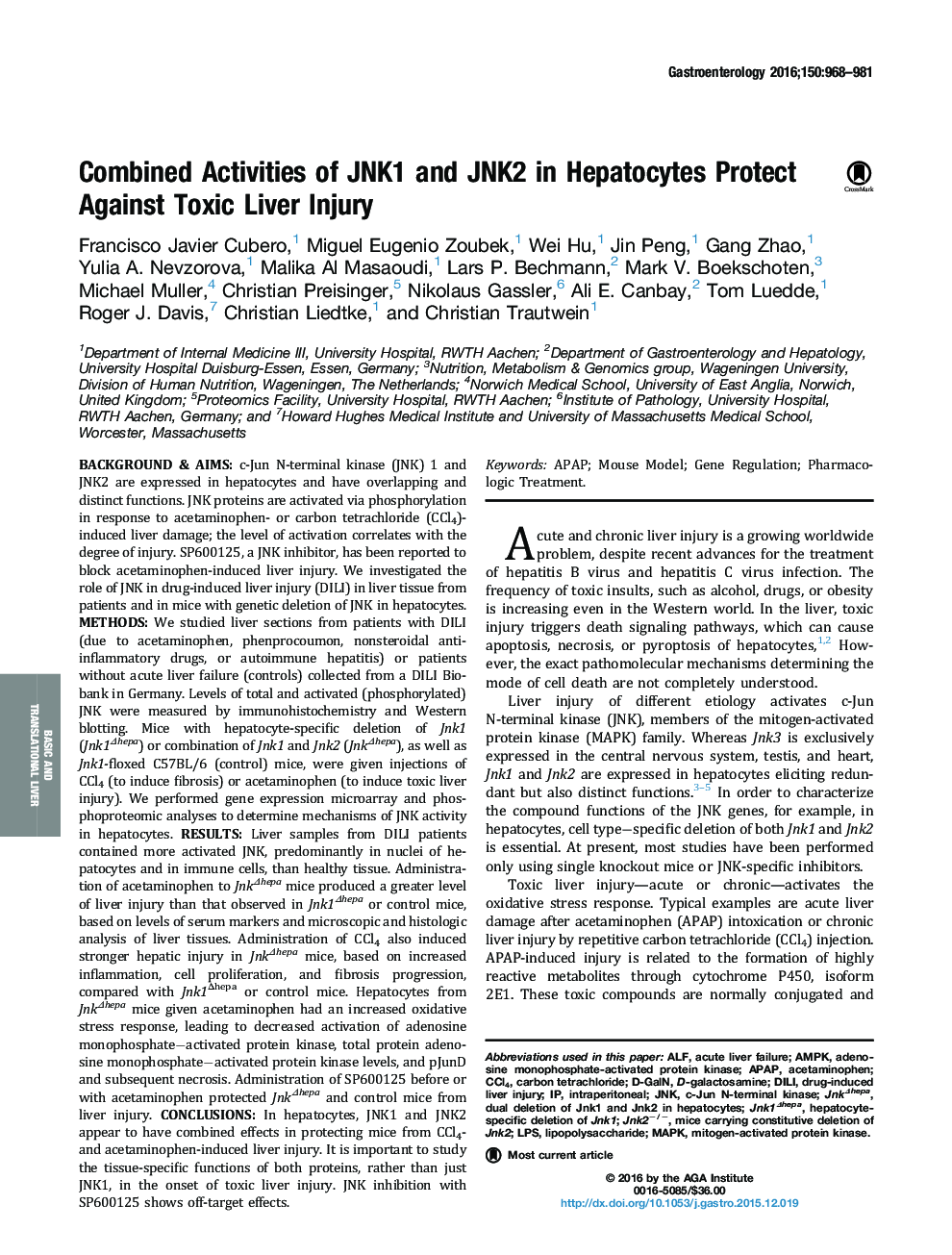| کد مقاله | کد نشریه | سال انتشار | مقاله انگلیسی | نسخه تمام متن |
|---|---|---|---|---|
| 3292201 | 1209775 | 2016 | 14 صفحه PDF | دانلود رایگان |

Background & Aimsc-Jun N-terminal kinase (JNK) 1 and JNK2 are expressed in hepatocytes and have overlapping and distinct functions. JNK proteins are activated via phosphorylation in response to acetaminophen- or carbon tetrachloride (CCl4)-induced liver damage; the level of activation correlates with the degree of injury. SP600125, a JNK inhibitor, has been reported to block acetaminophen-induced liver injury. We investigated the role of JNK in drug-induced liver injury (DILI) in liver tissue from patients and in mice with genetic deletion of JNK in hepatocytes.MethodsWe studied liver sections from patients with DILI (due to acetaminophen, phenprocoumon, nonsteroidal anti-inflammatory drugs, or autoimmune hepatitis) or patients without acute liver failure (controls) collected from a DILI Biobank in Germany. Levels of total and activated (phosphorylated) JNK were measured by immunohistochemistry and Western blotting. Mice with hepatocyte-specific deletion of Jnk1 (Jnk1Δhepa) or combination of Jnk1 and Jnk2 (JnkΔhepa), as well as Jnk1-floxed C57BL/6 (control) mice, were given injections of CCl4 (to induce fibrosis) or acetaminophen (to induce toxic liver injury). We performed gene expression microarray and phosphoproteomic analyses to determine mechanisms of JNK activity in hepatocytes.ResultsLiver samples from DILI patients contained more activated JNK, predominantly in nuclei of hepatocytes and in immune cells, than healthy tissue. Administration of acetaminophen to JnkΔhepa mice produced a greater level of liver injury than that observed in Jnk1Δhepa or control mice, based on levels of serum markers and microscopic and histologic analysis of liver tissues. Administration of CCl4 also induced stronger hepatic injury in JnkΔhepa mice, based on increased inflammation, cell proliferation, and fibrosis progression, compared with Jnk1Δhepa or control mice. Hepatocytes from JnkΔhepa mice given acetaminophen had an increased oxidative stress response, leading to decreased activation of adenosine monophosphate−activated protein kinase, total protein adenosine monophosphate−activated protein kinase levels, and pJunD and subsequent necrosis. Administration of SP600125 before or with acetaminophen protected JnkΔhepa and control mice from liver injury.ConclusionsIn hepatocytes, JNK1 and JNK2 appear to have combined effects in protecting mice from CCl4- and acetaminophen-induced liver injury. It is important to study the tissue-specific functions of both proteins, rather than just JNK1, in the onset of toxic liver injury. JNK inhibition with SP600125 shows off-target effects.
Journal: Gastroenterology - Volume 150, Issue 4, April 2016, Pages 968–981